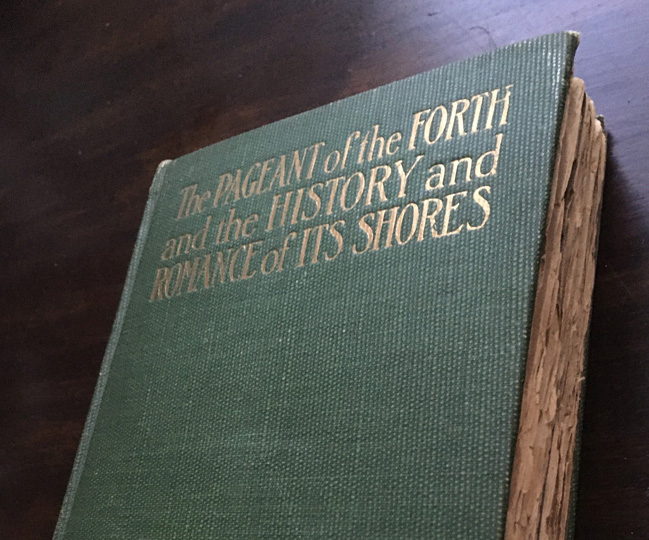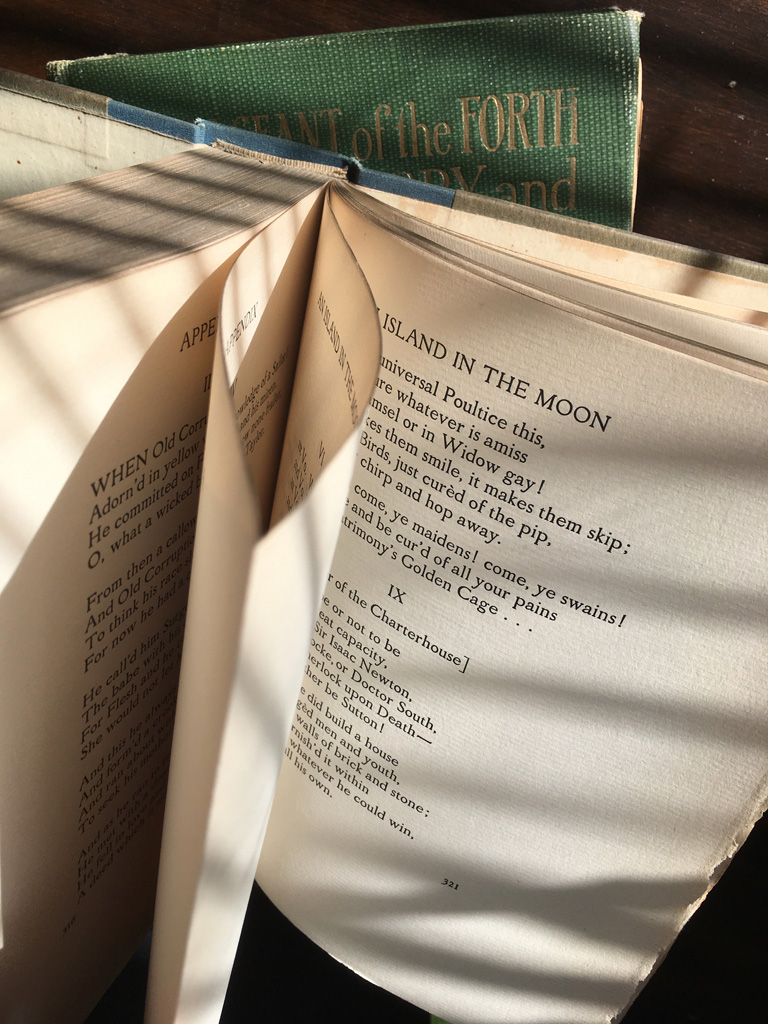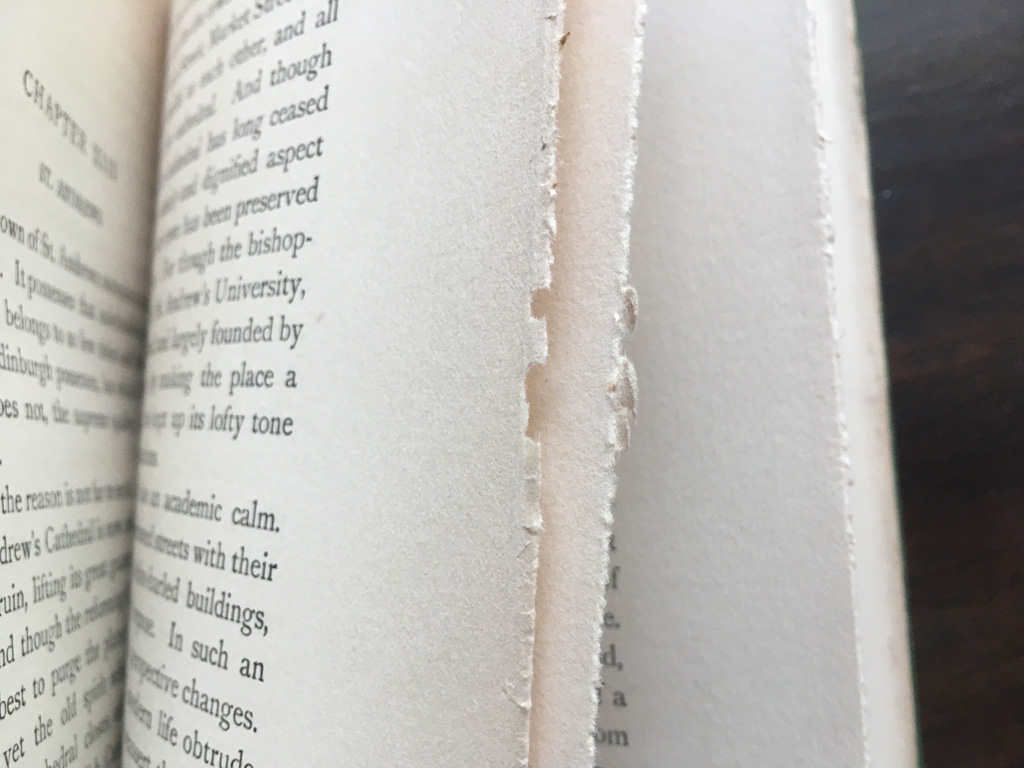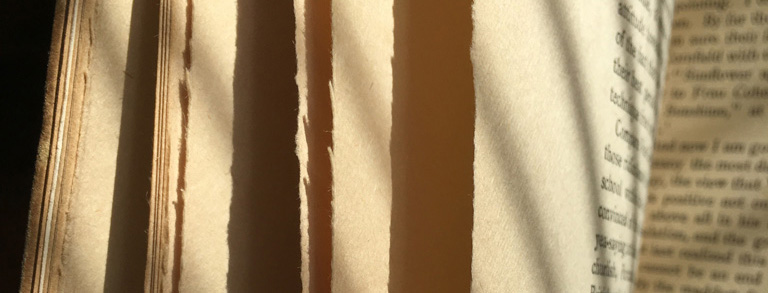What is a book? Opinions vary.
Some believe that a book is simply a collection of written content, independent of the medium by which it is distributed. Thus, a Kindle e-book is a book, and so is the typical Gutenberg Project book, that takes an out-of-copyright book and vomits its text onto a web page without pagination or formatting. Perhaps a hopeful writer’s unfinished manuscript is a book, or even the collection of disjointed articles he posts to his blog. In other words, many think a book is defined by the message, and not the medium.
Others, like me, feel that the medium definitely needs to be in there, somewhere. Recently, an article in the Atlantic titled Why Are e-Books So Terrible? posited some features that might define “bookiness”: among them, that it should have pages; the pages must be bound and not loose-leaf; they should be made of paper or something much like it, and they can be flipped to allow instant random access to any part of the book. Clearly, no e-book or web page would pass muster by that definition. I have agreed with all of these points for years, and I am a bit disappointed to find that I would merely be repeating them if I were to expound on this topic in the manuscript for my own long-postponed book.
Booky books
The Atlantic article is refreshing in that, in deriving the features of “bookiness” it draws upon some of the history of how books were printed and bound in the past. But the article is really about why e-books are terrible, and not the history of books. Thus it fails to relate a rather fascinating part of the history of “booky” books: the “opening” of the pages. No, it doesn’t mean what you think. At one time, this kind of “opening” was an integral part of reading almost any book, and actually required the reader to wield a knife.
At times, we still can see evidence of this lost practice, if we know what to look for. A few weeks ago, I was walking around downtown Ann Arbor, and passed by Dawn Treader Books, a used bookstore that always has free books in a box on the sidewalk, next to a rack of dollar books. I looked in the “free” box and pulled out the book pictured below, titled The Pageant of the Forth and the History and Romance of its Shores.

Reading the title, it took me a couple of seconds to realize that “The Forth” is of course the Firth of Forth, the estuary of eastern Scotland on which Edinburgh sits. But it was not this topic that led me to pick up the book — instead, it was the ugly, ragged edges of the pages. That meant it’s a rare species of book — a knife-cut, deckle-edged book, of exactly the sort I am talking about here.
If you’re a book-loving sort you might already know this, but I’ve found most don’t: when a book is manufactured, the individual pages are formed from the folding of much larger sheets, that typically might comprise about 16 or 32 individual pages of the book. Having been printed, folded, stacked, and bound, the folds then end up at the top or right edges of the book. The book is then trimmed to remove the folds, thus freeing the pages from each other, and resulting in the typical book we are familiar with, whose pages can be easily flipped.
Print now, bind later
But in the very early days of publishing, delivering a book to a reader was often a two-stage process. Having a book “published” simply meant that the printer would print the large, unfolded sheets, but would not bind the book. Binding was time-consuming and expensive, and the market uncertain. Instead, when a bookshop or even an individual customer placed an order for the book, a set of unfolded pages would then be sent to a bindery, and the bindery would bind the book according to the customer’s specifications. As the Atlantic article reminds me, this allowed the bookshop, or the reader, to have the book bound however they wished — perhaps in leather, or goatskin, or paperboard, perhaps with the shop’s name printed on it, or to match the rest of the books in the well-heeled reader’s library.
A real page-turner
Later, as literacy increased and books became sought after by the masses, it became more common for a publisher or a bookseller to bind large numbers of books in advance of their sale. Still, however, binding was not a standardized process. Sometimes the publisher would only trim the folds off the top edge of the book, perhaps to give the reader a nice even surface to turn the pages by, or to apply a decorative gold gilt. Trimming the right edges, however, appears to have been optional — in particular, we see this with many better-quality books from the late 1800s to the early 20th century. When left untrimmed in this way, about half of the pages were still joined to their neighbor, and could not be turned and read, because somebody first had to cut through the fold to separate them.
So, the reader would have to “open” those pages as the book was read, with a letter opener, penknife, or whatever else was handy. This led to a book that developed a very ragged right edge (in addition to the feathered, deckle edges of the handmade sheet the pages were folded from, which were already ragged). Sometimes you can even find old books with a few uncut pages, indicating those pages were never actually read.

Grab & go!
So, seeing this lovely book languishing in the “free” box, a gorgeous example of a knife-cut, deckle-edged book, I immediately grabbed it.
But I became skeptical that such an awesome book was actually free. So I looked on the inside leaf, and it had what appeared to be a price: a penciled “1” followed by a hyphen, suggesting it was a dollar book, and not free. So I took it inside and asked the person at the counter: “It was in the “free” box, but it says 1 dollar. Is it free or a dollar?” And he looked, and said “that’s a dollar book”. So I happily pulled out a dollar and paid. While doing so I remarked, “Well, it has knife-cut pages, so I like it,” thinking he’d appreciate the fact that I was one of the few who knew that old books often had to be cut open. And you know what he said? Nothing but, “There you go.” That seemed so dismissive! But, I left with my book, and decided not to care about whether he appreciated what a gem it was or not.
Looking it up online, though it’s 110 years old it is actually not a very valuable book, so I guess he knew his business. I got it for about a tenth of its value. But it’s a beautiful specimen of the bygone days of book manufacture, so I’ve happily added it to my collection of quaint and curious volumes of forgotten lore. It has a lot of stories about castles and ruins and golf, in somewhat purple prose.
Well read
This book does not have any unopened pages, indicating that its original owner or some combination of its subsequent ones found every page to be worth reading. However, I do have a few other books that retain some unopened pages. Below we see a 1921 copy of The Poems of William Blake, with a few unopened pages still remaining in the Appendix. The publisher trimmed this book at the top, but left the right edge untrimmed.

Sometimes, as we see below, a close examination of a book of this type shows that the facing pages have matching tear marks, reinforcing the fact that they were separated with a paper knife or letter opener in order to be opened and read.

In practice, not all of the pages of these books would need to be cut, because not all the edges would have a fold. Typically the folds would occur in pairs, separated by several free pages — but it really depended on the format of the book, determined by the layout of the large sheets that were composed and printed — for example, quarto or octavo. Most commonly, we encounter the octavo format, which presented the reader a repeating sequence of two folds (freeing two leaves each, when cut), followed by four leaves that were already free and did not need to be cut.
Whenever I pass by a selection of cheap or free books, I always look for better and better examples of this lost aspect of book reading, which for the most part has slipped entirely from our collective societal memory.
I sincerely wish that some creative publisher would resurrect this practice, so I could experience for myself the need to free the pages from each other as I read. Rather than an annoyance, I think it would be somehow satisfying. I imagine it would be a pleasant way of reinforcing, in a tactile way, my progress through the book, and mostly eliminate the need for a bookmark, at least on the first read. And it would certainly prevent me to some extent from skipping ahead to the ending. In a way, this manual opening of pages is much like a web browser’s practice of coloring a hypertext link in a different color to show that we’ve visited it before. Once again, we see there’s nothing new under the sun.
In The Great Gatsby, a book which was published at the tail end of the era of the uncut page, a character tells of Gatsby’s extensive library of books, which on examination he finds consists entirely of real books — with unopened pages.
“See!” he cried triumphantly. “It’s a bona-fide piece of printed matter. It fooled me. This fella’s a regular Belasco. It’s a triumph. What thoroughness! What realism! Knew when to stop, too — didn’t cut the pages. But what do you want? What do you expect?”
– F. Scott Fitzgerald, “The Great Gatsby”
The contemporary reader would have known that this meant that these books had never been read, and were only for show — but, as nothing better was expected of him, Gatsby got it right. Thus, it is something of a dream of mine to find a vintage copy of The Great Gatsby that was bound in this way, and still has at least a few uncut pages.

Article and photos Copyright 2021 by the author.


